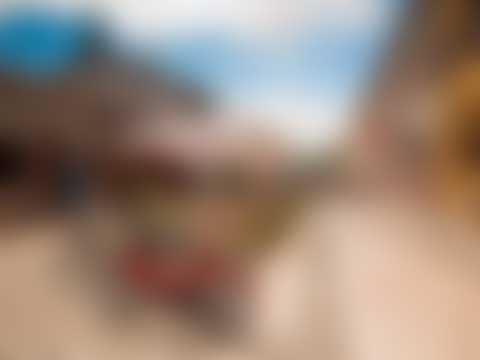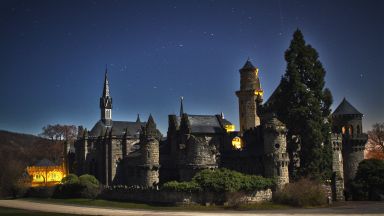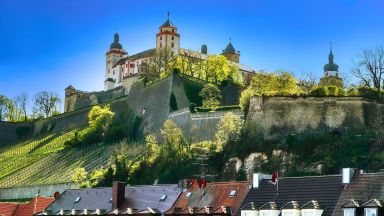Kassel: The Complete Guide
Kassel is a city in northern Hesse, Germany, located on the Fulda River. It is the third-largest city in Hesse, with a population of approximately 200,000 people.
The city has a rich cultural heritage, and it is known for its museums, parks, and historic landmarks. One of the most famous attractions in Kassel is the Bergpark Wilhelmshöhe, a UNESCO World Heritage Site that features the impressive Hercules monument and the Wilhelmshöhe Palace. The Bergpark is also home to the largest man-made cascading fountain in the world, the spectacular water features are turned on regularly during the summer months.
Another famous attraction in Kassel is the Documenta, an international contemporary art exhibition that takes place every five years. Documenta attracts art enthusiasts from around the world, and it is one of the most important contemporary art events in the world.
Kassel is also home to several other museums, including the Fridericianum, which is one of the oldest public museums in Europe, and the Brothers Grimm Museum, which celebrates the lives and works of the famous Grimm Brothers who collected and published many fairy tales.
The city has a vibrant cultural scene, and it hosts several annual events, including the Kassel Documentary Film and Video Festival, the Kassel Literature Festival, and the Kassel Jazz Festival. The city also has a variety of restaurants, bars, and cafes, and it is known for its regional cuisine, including schnitzel, bratwurst, and apple wine.
Kassel has a strong industrial and economic base, with a focus on automotive manufacturing and engineering. The city is home to several universities and research institutions, which contribute to its innovative and forward-thinking culture.
Visiting Kassel for the first time and wondering what are the top places to see in the city? In this complete guide, I share the best things to do in Kassel on the first visit. Top help you plan your trip, I have also included an interactive map and practical tips for visiting!
This website uses affiliate links which earn a small commission at no additional cost to you.
11 Best places to See in Kassel
This complete guide to Kassel not only tells you about the very best sights and tourist attractions for first-time visitors to the city but also provide insights into a few of our personal favorite things to do.
This is a practical guide to visiting the best places to see in Kassel and is filled with tips and info that should answer all your questions!
Museum for Sepulchral Culture

Location: Museum für Sepulkralkultur, Weinbergstraße, Kassel, Germany | Hours: Tuesday - Sunday 10:00 a.m. – 5:00 p.m | Price: Adult €8.00 | Website | Distance: 0.70km
Visiting Museum for Sepulchral Culture
Hessian State Museum

Location: Hessian State Museum, Kassel, Brüder-Grimm-Platz, Kassel, Germany | Hours: Tue–Sun and public holidays 10 am–5 pm | Price: Adults: 6 € | Website | Distance: 0.70km
Visiting Hessian State Museum
Grimm World

Location: GRIMMWELT Kassel gGmbH, Weinbergstraße, Kassel, Germany | Hours: 10am-6pm Tue-Sun, to 8pm Fri | Price: adult/concession €8/6 | Website | Distance: 0.80km
Visiting Grimm World
New Gallery (Neue Galerie), Kassel

Location: New Gallery, Schöne Aussicht, Kassel, Germany | Hours: Tue–Sun and public holidays 10 am–5 pm | Price: Admission: 6 € Reduced rate 4 € Children and young people under 18 free admission | Distance: 1.00km
Visiting New Gallery (Neue Galerie), Kassel
Museum of Natural History Ottoneum

Location: Natural History Museum, Steinweg, Kassel, Germany | Hours: Daily from 10 am to 8 pm | Distance: 1.30km
Visiting Museum of Natural History Ottoneum
Karlsaue Park

Location: Karlsaue, Auedamm, Kassel, Germany | Distance: 1.40km
Visiting Karlsaue Park
Schloss Wilhelmshöhe

Location: Schloss Wilhelmshöhe, Weißensteinflügel, Schlosspark, Kassel, Germany | Hours: 10am-5pm Tue-Sun, to 8pm Wed | Price: adult/concession €6/4, Weissenstein wing incl tour €4/3, audioguide €3 | Distance: 4.50km
Visiting Schloss Wilhelmshöhe
Löwenburg Castle

Location: Löwenburg, Schloßpark, Kassel, Germany | Price: adult/concession €4/3 | Distance: 4.90km
Visiting Löwenburg Castle
Bergpark Wilhelmshöhe

Location: Bergpark Wilhelmshöhe, Kassel, Germany | Hours: 9am-sunset, visitor centre 10am-5pm May-Sep, to 4pm Sat & Sun Oct-Apr | Website | Distance: 5.20km
Visiting Bergpark Wilhelmshöhe
Schloss Wilhelmsthal

Location: Schloss Wilhelmsthal, Calden, Germany | Hours: 1 April–31 October Tue–Sun and public holidays 10 am–5 pm last tour at 4 pm1 November–31 March Fri–Sun and public holidays 10 am–4 pm last tour at 3 pm| Price: 4 € Adults, Children and young people under 18 free admission | Website | Distance: 10.00km
Visiting Schloss Wilhelmsthal
Castle Sababurg

Location: Sleeping Beauty Castle Sababurg, Hofgeismar, Germany | Hours: April to the end of October, Fridays to Sundays and holidays from 10:00 to 18:00 | Price: Outdoors free | Distance: 26.00km
Visiting Castle Sababurg


